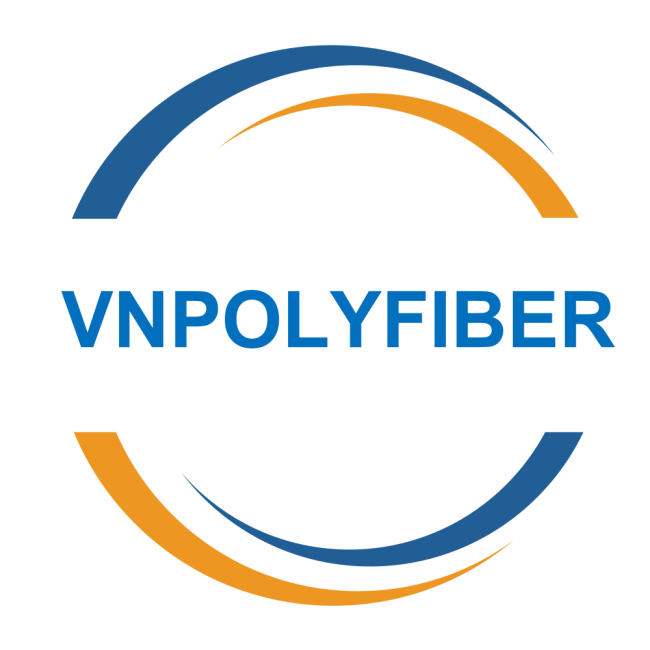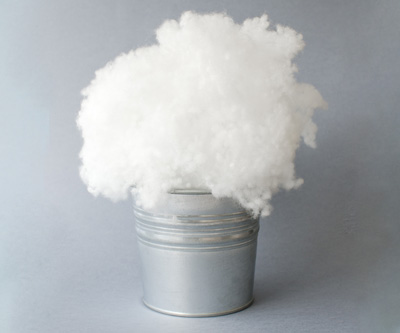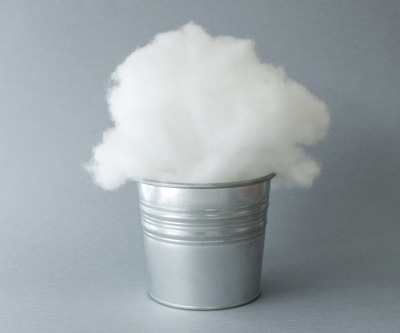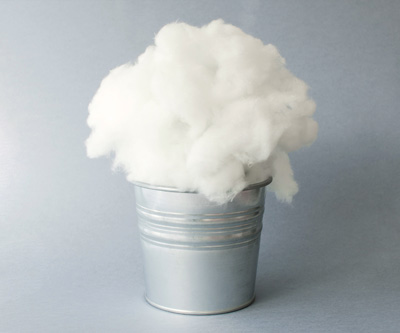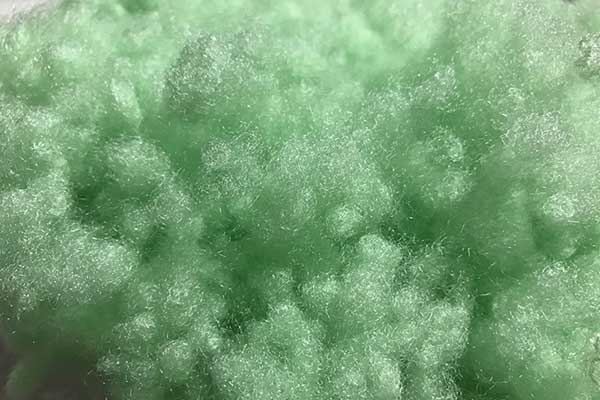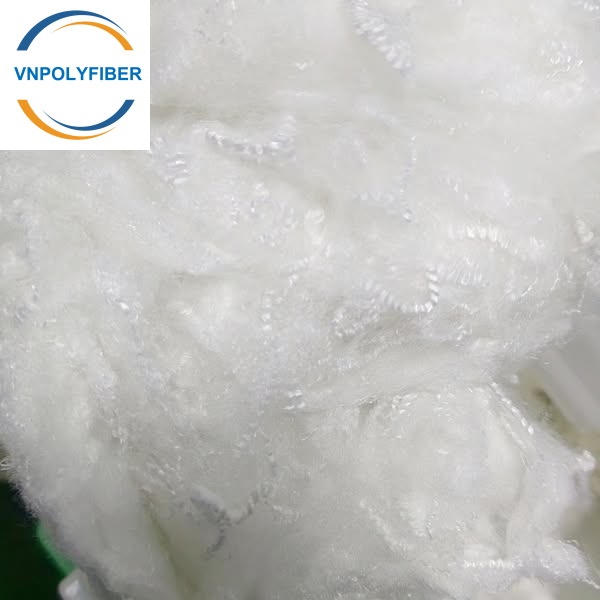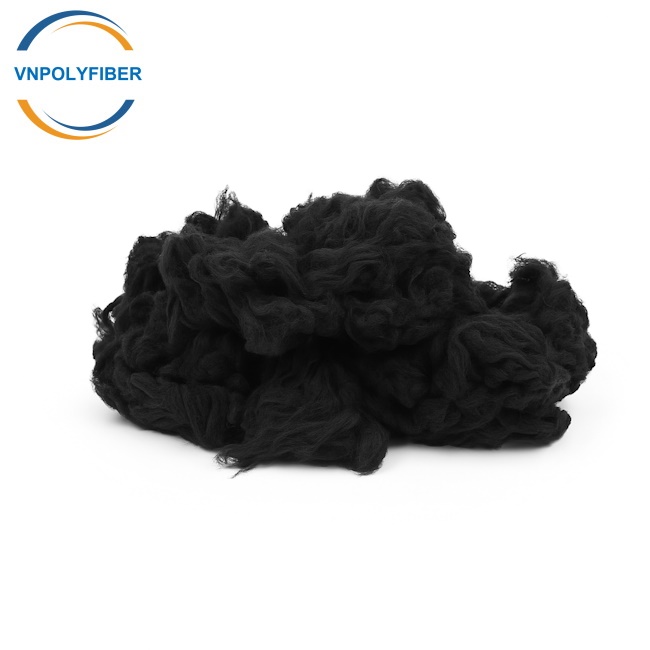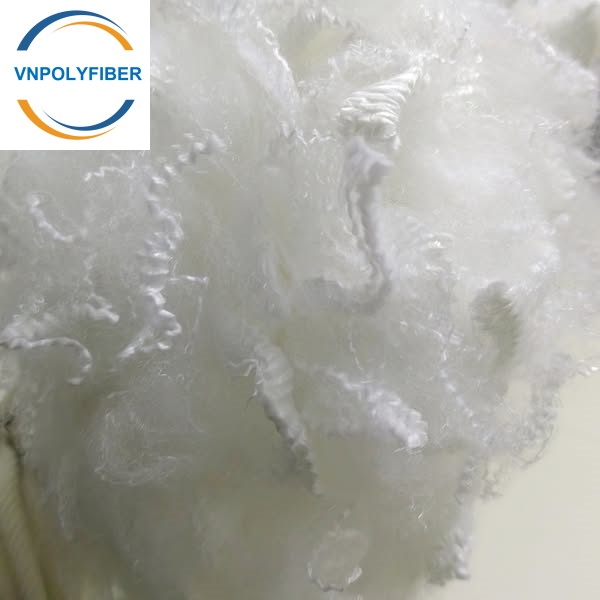Polyester Fiberfill 7 Denier 15 Denier – Hollow Slick Conjugate Fiber Fill
- Hollow PSF has better loft, recovery and warmth retention property than solid PSF, because there is a hole in single fiber, it can save some air.
- Our hollow PSF is easy to be carded and good at bonding with low melting fiber.
- It’s mainly used for fiberfill, filtration, padding, wadding, insulation etc
PRODUCT DETAIL
What is Polyester Fiberfill?
Polyester fiberfill, that fluffy, resilient material nestled within our pillows, cushions, and stuffed toys, is a ubiquitous yet often underappreciated component of modern life. Its versatility, affordability, and comfort-enhancing properties have made it a staple in numerous industries. This post delves into the world of polyester fiberfill, exploring its properties, manufacturing, applications, and the reasons behind its enduring popularity.
Polyester fiberfill is a synthetic filling material composed of fine, crimped polyester fibers. These fibers are engineered to create a lightweight, lofty, and resilient fill that provides cushioning, support, and warmth. Unlike natural fills like down or feathers, polyester fiberfill is hypoallergenic, resistant to mold and mildew, and easy to care for.
Polyester fiberfill was originally developed by Imperial Chemical Industries (ICI) in partnership with DuPont. Over time, it has become a widely accepted material for various applications due to its affordability and versatility.
How to make polyester fiberfill
The journey of polyester fiberfill begins with the same raw materials as other polyester fibers: PTA and MEG. These are polymerized into PET chips, which are then melted and extruded through spinnerets. However, the extrusion process for fiberfill is specifically designed to create crimped fibers. Crimping involves creating a wave-like or spiral shape in the fibers, which significantly increases their bulk and resilience.
After extrusion, the fibers are often siliconized, a process that involves coating them with a silicone finish. This treatment enhances the fiber’s softness, smoothness, and loft. The fibers are then processed into a loose, fluffy fill, ready for use in various applications.
Key Properties of Polyester Fiberfill
- Loft and Resilience: The crimped fibers create a high degree of loft, providing excellent cushioning and support. The fibers’ resilience allows them to spring back into shape after compression, maintaining their bulk over time.
- Softness and Smoothness: Siliconization contributes to a soft, smooth texture, enhancing comfort.
- Hypoallergenic: Polyester fiberfill is inherently hypoallergenic, making it an ideal choice for individuals with allergies or sensitivities.
- Resistance to Mold and Mildew: Polyester’s hydrophobic nature prevents moisture absorption, inhibiting the growth of mold and mildew.
- Warmth and Insulation: The trapped air within the fiberfill provides excellent thermal insulation, keeping users warm and comfortable.
- Lightweightness: Polyester fiberfill is lightweight, making it easy to handle and transport.
- Durability and Longevity: Polyester fibers are strong and durable, ensuring that the fill maintains its properties over time.
- Easy Care: Polyester fiberfill is machine washable and dryable, simplifying cleaning and maintenance.
- Affordability: Compared to natural fills, polyester fiberfill is relatively inexpensive, making it a cost-effective option.
Applications of Polyester Fiberfill
Polyester fiberfill’s versatility has led to its widespread use in numerous applications:
- Bedding: Pillows, comforters, mattress toppers, and quilts rely on polyester fiberfill for its comfort, support, and warmth.
- Furniture: Upholstery cushions, sofa pillows, and furniture padding utilize polyester fiberfill for its cushioning and resilience.
- Toys and Stuffed Animals: Polyester fiberfill is the primary filling material for toys and stuffed animals, providing a soft, safe, and durable fill.
- Crafts and Sewing: Polyester fiberfill is used in various craft projects, including quilting, sewing, and toy making.
- Automotive Interiors: Seat cushions, headrests, and other automotive interior components utilize polyester fiberfill for its comfort and support.
- Outdoor Gear: Sleeping bags, camping pillows, and other outdoor gear benefit from polyester fiberfill’s warmth, lightweightness, and moisture resistance.
- Filtration: Some coarser grades of polyester fiberfill are used in filtration applications.
Advantages of Polyester Fiberfill
- Consistent Quality: The manufacturing process ensures consistent quality and performance.
- Versatility: Polyester fiberfill can be engineered to meet specific requirements, offering a range of loft, softness, and resilience.
- Easy Maintenance: Machine washability and dryability simplify cleaning.
- Cost-Effectiveness: Polyester fiberfill is an affordable filling material.
- Hypoallergenic and Safe: Free from allergens and resistant to mold and mildew.
Considerations and Variations
- Hollow Conjugated Siliconized (HCS) Fiberfill: This type of fiberfill features a hollow core and a conjugate structure, further enhancing loft and resilience.
- Microfiber Fill: Finer polyester fibers are used to create a softer, more luxurious fill.
- Recycled Polyester Fill: Increasingly, recycled polyester is used to produce fiberfill, reducing the environmental impact.
The Future of Polyester Fiberfill
Polyester fiberfill will continue to be a vital material in numerous industries. Ongoing research and development focus on improving its sustainability, exploring bio-based alternatives, and enhancing its performance characteristics. As consumers seek comfortable, affordable, and easy-care products, polyester fiberfill will remain a staple in our daily lives. Recent advancements in polyester fiberfill include the development of blends that combine polyester staple fibers with binder fibers, allowing for thermally bonded products with improved durability and resilience. These advancements aim to enhance the performance of polyester fiberfill while maintaining its softness and aesthetic appeal.
Read more:
Technical Parameter
Specification
- Denier: 3D-15D
- Type: Hollow Conjugate Slick
- Grade: Recycle, First quality
- Color: white, optical white,
- Cut Length: 32mm-76mm
- Finish: silicon, slick, dry, FR, antibacterial, low shrinkage
- Application.Filling Material: filling toys pillows (51/64)Spinning quilt/spinning cotton/cloth lining/slippers lining/(51/64)Needle-punched nonwoven/ polyester wadding/nonglue cotton/Filtering material/Hard mattress(51/64)
Staple fiber production process
The base material, which comes in chips, is melted in an extruder before being quantified in a gear pump and transferred to a nozzle. Polymers that pass through the nozzle are cooled and solidified in a spinning tank, and end up in a fiber form (semi-finished product). Fiber released from multiple spinning tanks is lubricated and gathered before being wound by a gear wheel and placed in cans. Fiber placed in cans is given various properties through a stretching process, in which fiber is stretched at various roller speeds designed to endow different degrees of rigidity and elasticity.
The fiber is again lubricated for enhanced quality and to facilitate the processes that follow. A crimping process takes place to give the fiber various properties, including bulk and mixability. Moisture and lubricant on the fiber is dried off in a heat dryer. The fiber is then cut into required lengths and end up in a bale form. The fiber is then compressed, packaged, and stored for factory release when ordered.
PRODUCTION PROCESS OF POLYESTER STAPLE FIBER
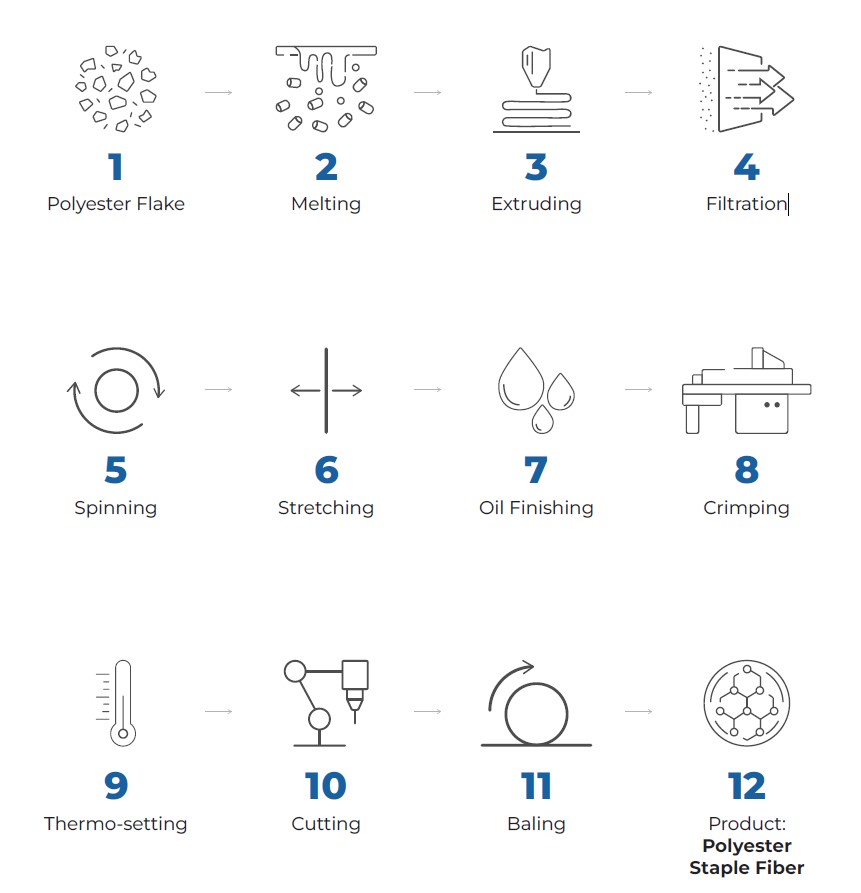
FAQ
1. What do you offer?
We produce recycled hollow conjugated siliconized and non-siliconized polyester staple fiber mainly, we can make hollow fiber (HS/ HD) and virgin polyester staple fiber HCS as well.
2. What is it used for?
Our fiber is widely used in filling, non-woven fabric
3. Are you a factory or a trading company?
We are a factory specialized in polyester staple fiber for many years but now we also have our own professional trading company. We will source many types of textile products such as yarn, PP fibers from others to supply our own customers as well. We also provide our own customers with other related products such as: Foam, Pillows, Cushions, Toys, Down/ Feather,…
4. Where is your factory location?
Our factory locates in the north and the south of Vietnam. You can visit us from Ho Chi Minh City and Hanoi City, Vietnam. You could contact our salesman to fetch you if visiting.
5. Can you accept free sample?
Yes, the hand sample is free when not exceed 1 kilograms. Upon price confirmation, we will provide a sample within 2-3 days; the freight cost will be charged to client.
6. Can you provide ODM service?
Yes, we work on ODM orders. Which means size, material, quantity, design, packing solution, etc, will depend on your requests, and your logo will be customized on our products.
7. How about your quality? What’s the minimum order Quantity (MOQ)?
Please try a trial order, you will know it. The MOQ is 23,000 Kilograms/order, but the price will be lower if you order bulk volume.
8. Can I mix different items in one order?
Sure, you can mix any products we can provide.
9. How can you guarantee the product quality?
We have experienced QC team. We control not only productive process but also raw material. In addition, we have different kinds of testing instrument to help us guarantee the product quality.
10. What’s the payment terms?
L/C at sight, 30% TT in advance are mostly accepted; other terms shall be negotiable by both sides
